It is hard to capture the feeling of a good pulling boat, but perhaps the best way to sum it up is to say that some boats just glide and will cover great distances on the water with seemingly no effort at all. A few pulls are all that are needed to reveal a well-designed wherry. With the skin-on-frame Ruth, Dave Gentry has created an interesting adaptation of a classic rowing wherry that captures that elusive quality of glide.The Ruth, with its fabric skin, and well-thought-out, easily built wooden frame, keeps the weight down to around 45 lbs, light enough for this 18-footer to be singlehandedly cartopped with ease. Gentry’s plans are a complete, well-illustrated, easy-to-follow, and include paper templates for the plywood frames.The structure for the Ruth is a combination of plywood and lightweight western red cedar stringers. The 1/2″ marine-plywood stem, frames, and transom are notched for the full-length strips that bend from bow to stern and give shape to the wherry. Joining frames to stringers takes only a bit of thickened epoxy and stainless-steel screws. Even the most inexperienced builder with basic tools can have a frame built in just a few hours. The plywood breasthook and various supporting knees are laid out in the paper templates as well. They are essential strengthening elements and relatively simple to add with a bit of beveling and finesse.
Join The Conversation
We welcome your comments about this article. To include a photo with your remarks, click Choose File below the Comment box.

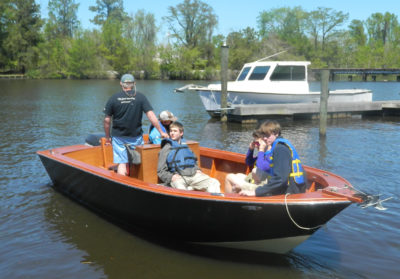


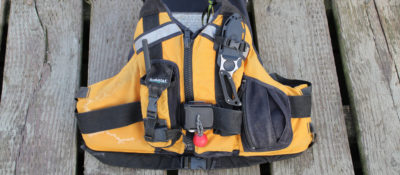


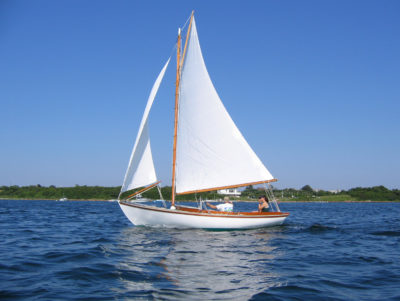



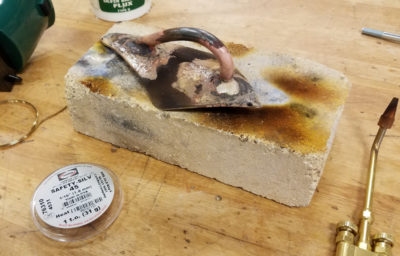

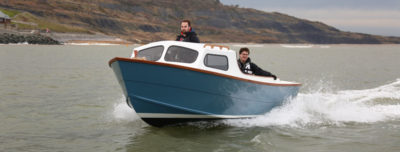


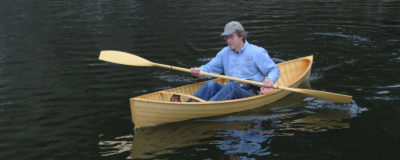
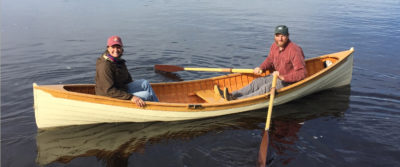




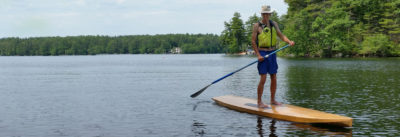
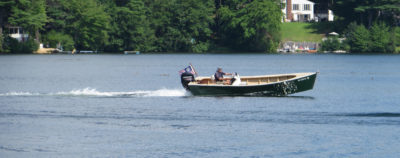
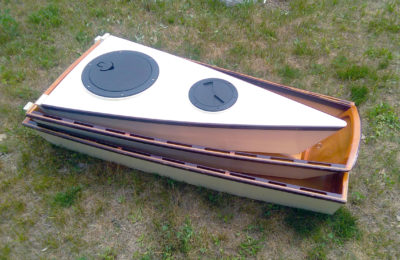




Do the plans come with plywood outrigger patterns? Or at least the specs?
Dave Gentry provides a full-sized template for the fixed seat oarlock “extensions” to be cut from 1/2″ okoume plywood. Colin Angus’ plans for the rowing rig include a full-sized template for a sliding seat rigger I made from spruce which was ‘glassed and epoxied.
Do you think that a forward-facing sliding seat rig could be installed in the Ruth wherry?
I think I’ve just discovered my boat. No, I don’t mean that I intend to build a Ruth now that I’ve seen the article. What I mean is, this looks exactly like the boat I bought used a few years ago. The appearance is so similar that I think the boat must have been built from these plans. I have a question about maintenance: how would you suggest going about cleaning (and/or refinishing) the “skin”? My boat now has a somewhat dirty appearance, after being stored outside for long periods. Another question: after rowing for a while in the cold waters of Frenchman Bay, the inside of the skin was a little bit wet. I assumed it was from condensation—very cold ocean water against the hull, humidity in the August air. Does that seem plausible? Or should I be concerned about leakage? Thanks for the article!
I have Dave’s Chuckanut 12S kayak. Skinned exactly like the Ruth, my boat often develops a bit of a “shine” on the inside of the skin when out for a few hours. As long as you are not seeing it pool and slosh, I would not worry about it.